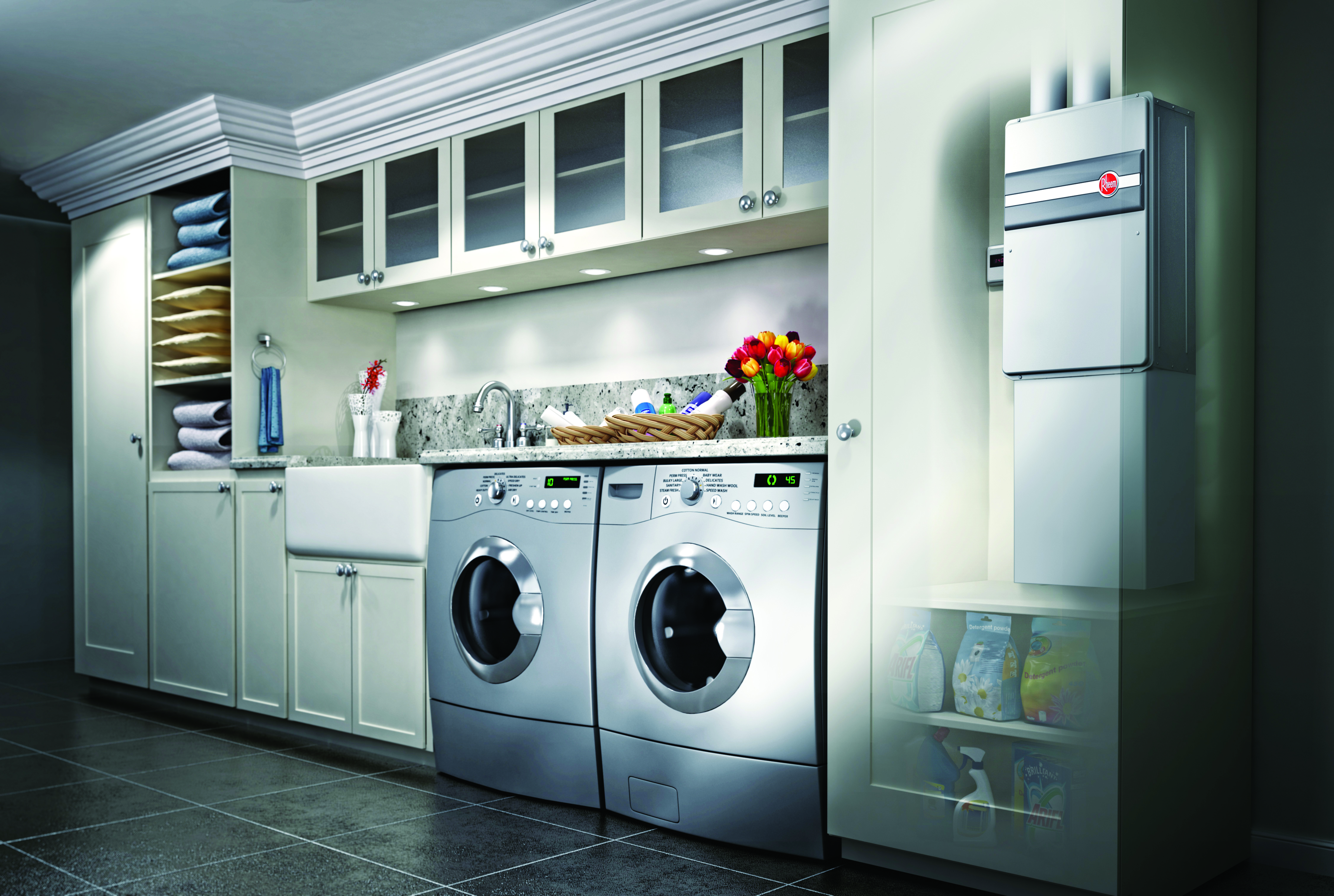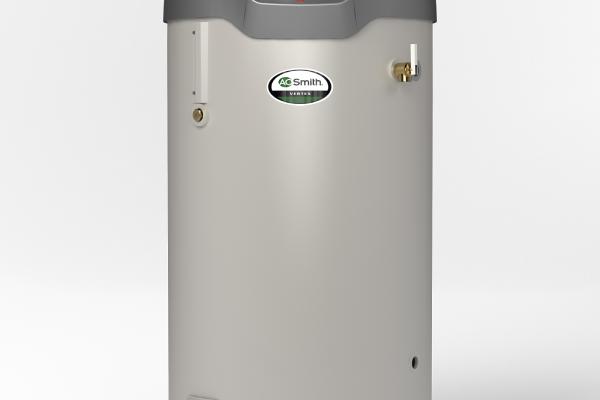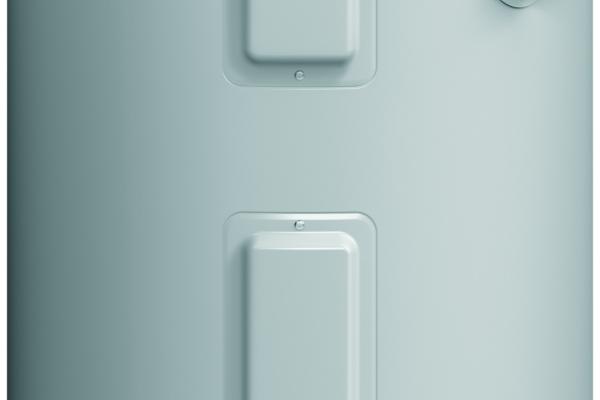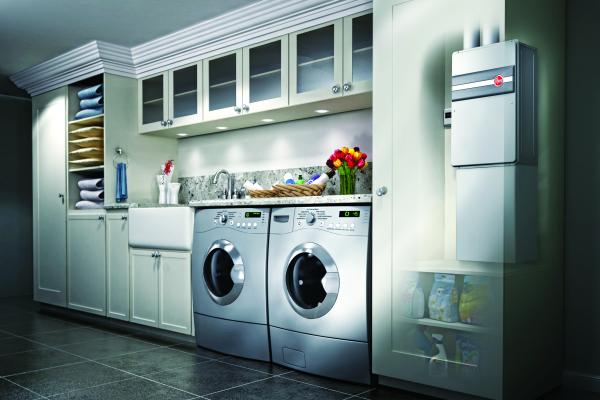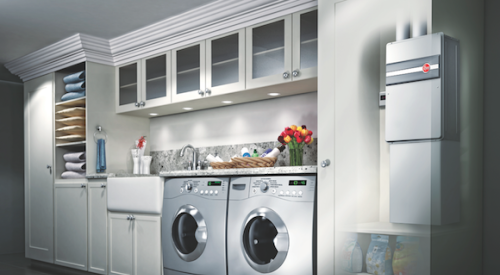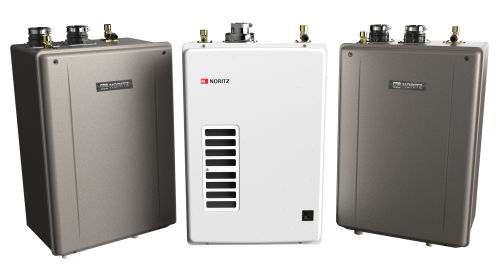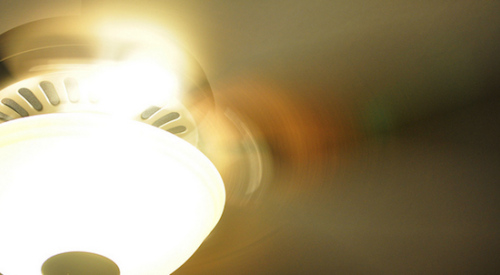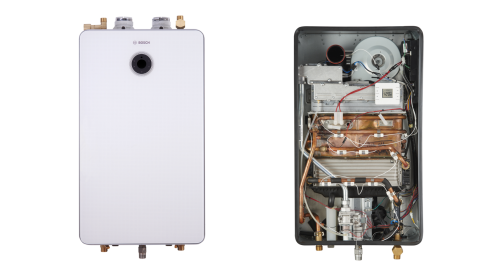New Energy Department and National Appliance Energy Conservation Act standards now require higher energy factor (EF) ratings on all residential water heaters. As a result, water heater requirements are way more stringent.
The standards apply to large- and small-capacity water heaters of all kinds. Water heaters that are 55 gallons or less must have an EF of 0.95, and units that are 56 gallons or more must have an EF of 1.98. What’s more, for electric water heaters larger than 55 gallons, heat pump technology is the only type currently capable of meeting the higher efficiency levels.
“For gas water heaters, anything under 55 gallons will be impacted slightly and anything over 55 gallons—whether it’s gas or electric—is going to be impacted significantly,” says Mike Siuda, director of tankless sales and marketing at Atlanta-based Rheem Manufacturing. “That means water heaters over 55 gallons will require significant changes to the way they’re built.”
Water heating is a priority because it accounts for about 20 percent of a home’s electricity bill. The Energy Department says the higher standards are good for consumers and the country, helping to save money and playing a vital role in cutting carbon emissions.
“Standards mandatory in 2015 will save approximately 3.3 quads of energy and result in approximately $63 billion in energy bill savings for products shipped from 2015–2044,” the agency writes. “The standard will avoid about 172.5 million metric tons of carbon dioxide emissions, equivalent to the annual greenhouse gas emissions of about 33.8 million automobiles."
There’s no question that the energy savings will be significant, but the rules bring major changes for the construction industry, especially for builders who specify big tanks in their homes. Say, for example, you’ve been using a 50-gallon electric water heater in your homes. The old standard called for 0.90 percent efficiency; the new requirement calls for a modest increase to a 0.95 percent efficiency rating. On the other hand, if you were using a 65-gallon heater, the old standard was a 0.88 percent efficiency rating, while the new standard requires 1.98.
These tanks will be more than just efficient; they’ll be smarter, too. “The technology will make them easy to communicate with for homeowners, easier to monitor, and easier to maintain and fix,” Siuda says.
All this technology will force contractors to rethink how they specify a water heater. Manufacturers had to modify the way they make the units in order to increase the performance, which resulted in bigger tanks and less installation flexibility. “For gas water heaters with 30- to 50-gallon storage tanks, the increase in minimum standards will trigger an increase in the insulation needed, resulting in up to 2 inches greater tank diameters,” says James York, vice president of engineering at Rinnai, in Peachtree City, Ga.
Remodelers have cause for concern, too. The larger-size tanks are potentially problematic when an existing tank water heater needs to be replaced and the new, larger unit doesn’t fit the space (or doorway or staircase). But larger units will also pose a problem for single- and multi-family builders, the NAHB says. “This may require builders to account for the increased size in their design,” the association adds. In addition to their size, tank-type heaters will also be more expensive and complex to install.
“Tanks with a 55-gallon capacity or larger may require an electrical outlet to be installed to power the additional components and controls needed to achieve high efficiency,” York explains. “Also, they will require special venting and a means to drain the condensation. For contractors and dealers, the heavier, more complex tanks may require more manpower to move, more space for storage, and potentially larger service trucks to transport them—all costly changes that will ultimately be passed along to the consumer.”
But just how much more expensive will these larger units be? Manufacturers say that builders, remodelers, and contractors will likely see a price increase of up to 35 percent. “[The efficiency] is going to come at a steep price tag,” Siuda says. According to the NAHB, “conventional, current minimum-efficiency 60-gallon gas and electric water heaters are approximately $675 to $1,500, while the new high-efficiency models are about $1,200 to $2,450."
Aware of the impending rule changes, manufacturers have been updating their products and production capacity to address the new requirements.
Here are five that meet the new rules.
